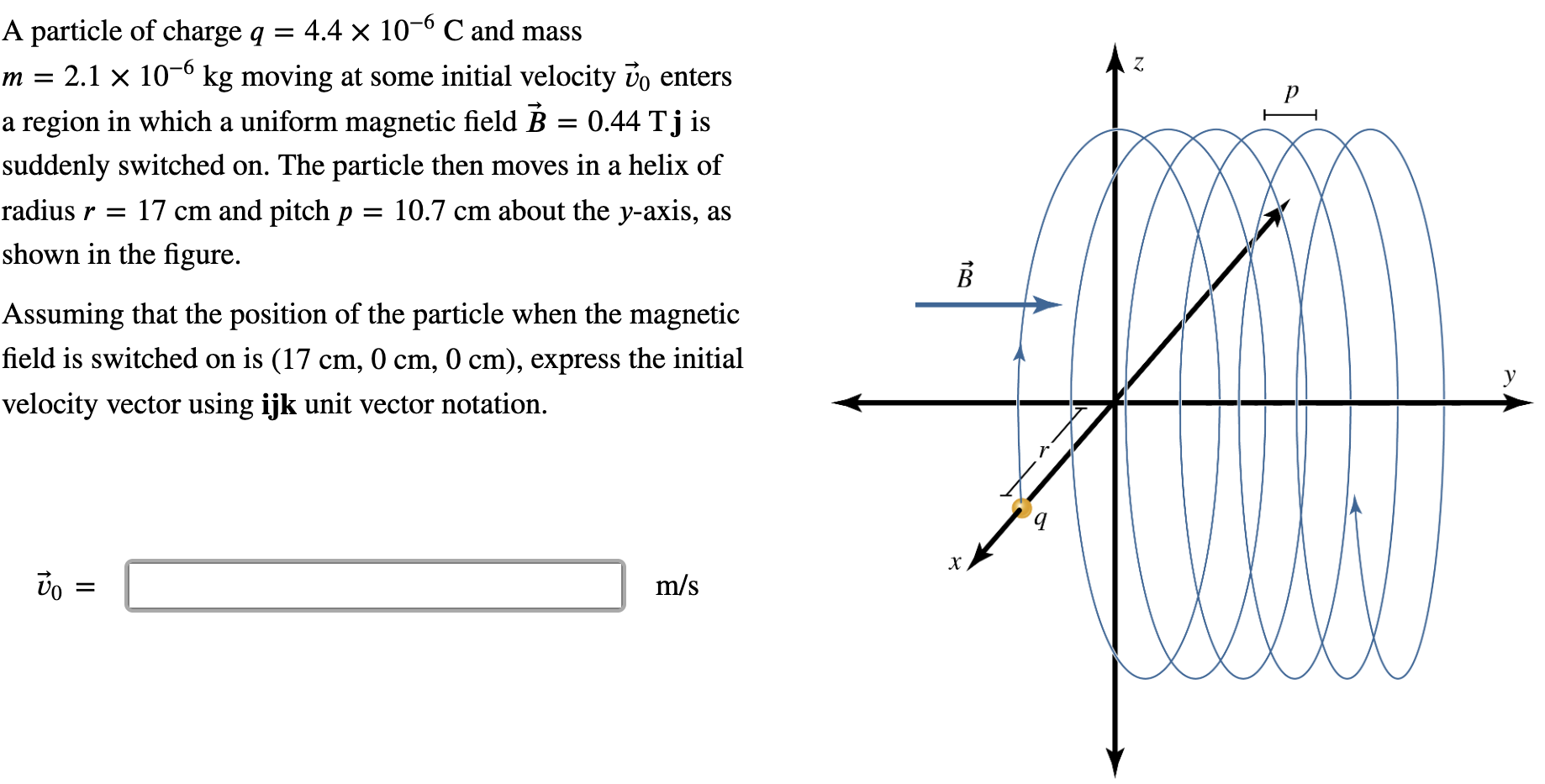A particle of charge q = 4.4×10−6 C and mass m = 2.1×10−6 kg moving at some initial velocity v→0 enters a region in which a uniform magnetic field B→ = 0.44 Tj is suddenly switched on. The particle then moves in a helix of radius r = 17 cm and pitch p = 10.7 cm about the y-axis, as shown in the figure. Assuming that the position of the particle when the magnetic field is switched on is (17 cm, 0 cm, 0 cm), express the initial velocity vector using ijk unit vector notation. v→0 = m/s
